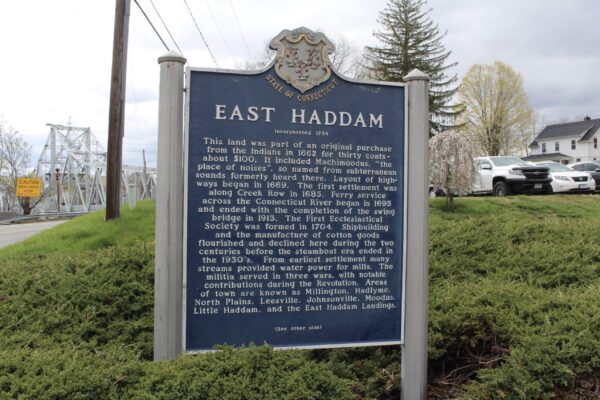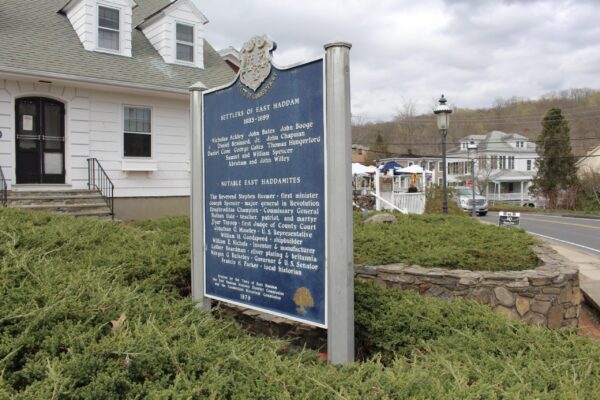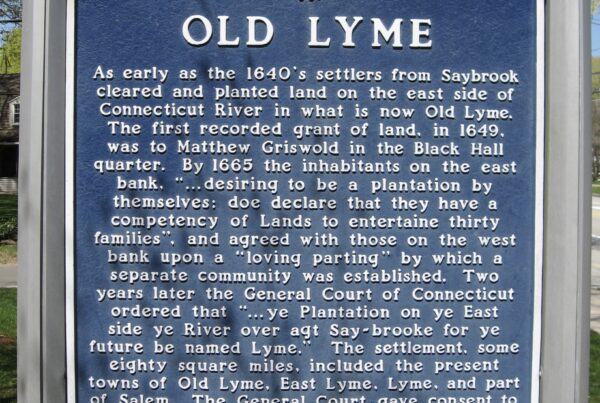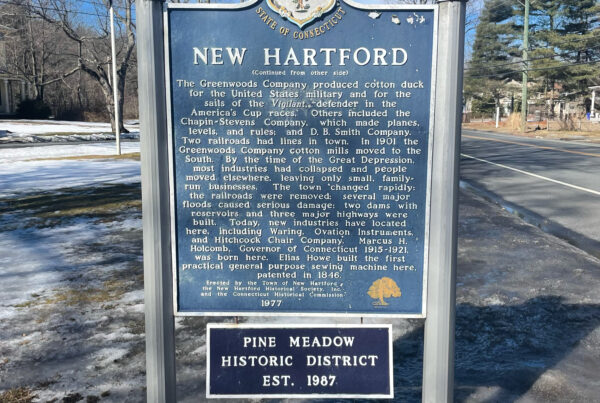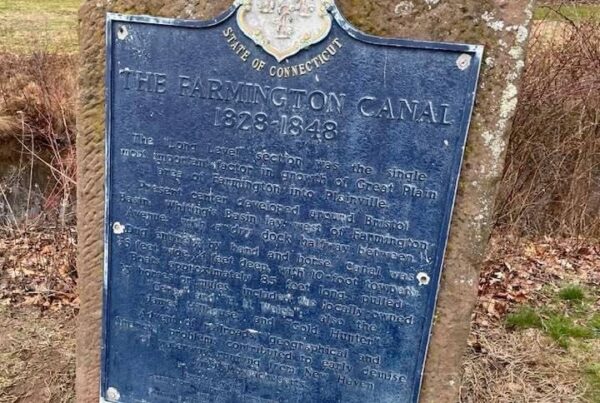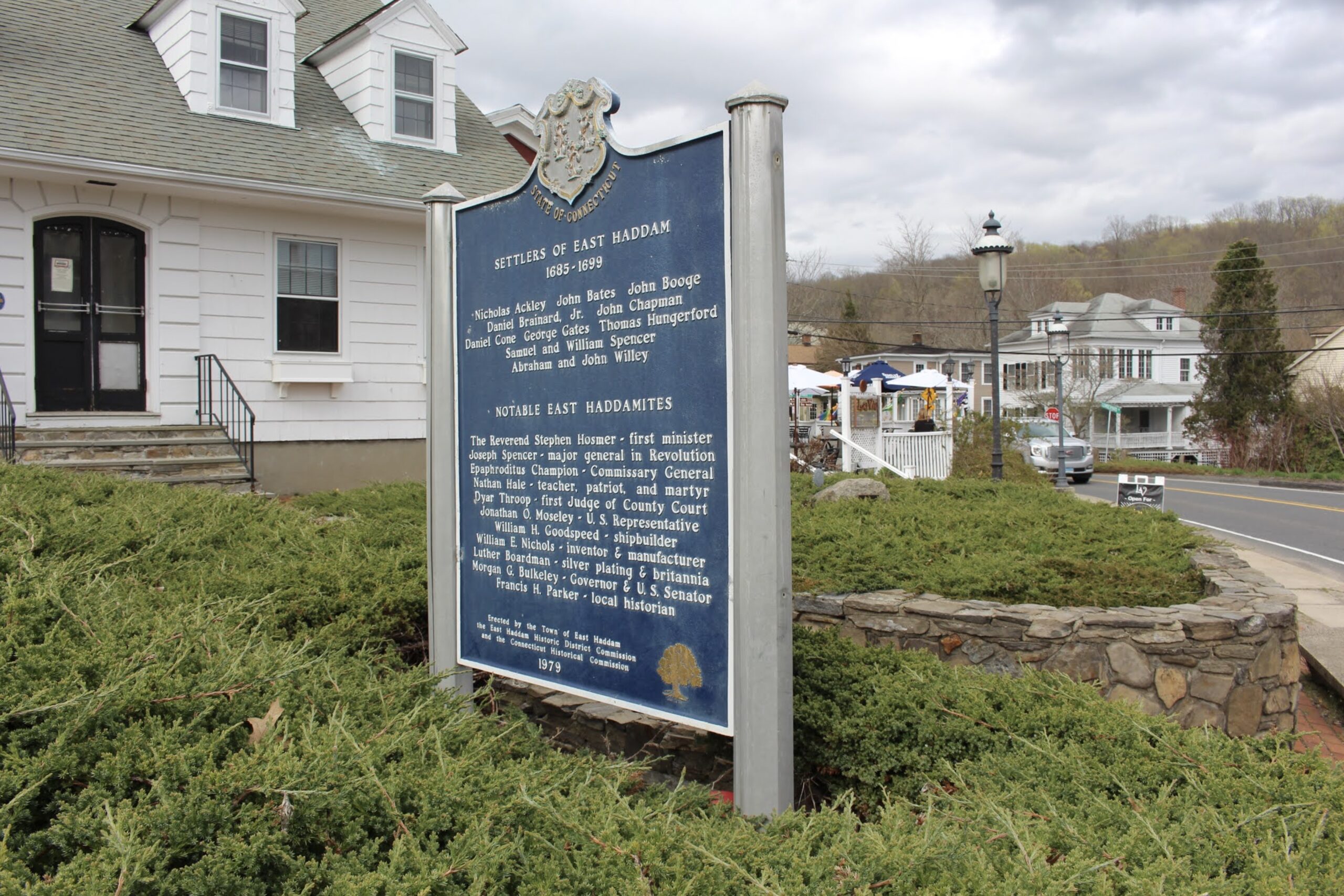
East Haddam, Connecticut:
Incorporated 1734
This land was part of an original purchase from the Indians in 1662 for 30 coats – about $100. It included Machimoodus, ‘the place of noises’ so named from subterranean sounds formerly heard there. Layout of highways began in 1669. The first settlement was along Creek Row in 1685. Ferry service across the Connecticut River began in 1695 and ended with the completion of the swing bridge in 1913. The First Ecclesiastical Society was formed in 1704. Shipbuilding and the manufacture of cotton goods flourished and declined here during the two centuries before the steamboat era ended in the 1930’s. From earliest settlement many streams provided water power for mills. The militia served in three wars, with notable contributions during the Revolution. Areas of the town are known as Millington, Hadlyme, North Plains, Leesville, Johnsonville, Moodus, Little Haddam, and the East Haddam Landings.
Settlers of East Haddam
Nicholas Ackley, John Bates, John Booge, Daniel Brainard Jr., John Chapman, Daniel Cone, George Gates, Thomas Hungerford, Samuel and William Spencer, Abraham and John Wiley.Notable East Haddamites
The Reverend Stephen Hosmer – first minister
Joseph Spencer – major general in Revolution
Epaphroditus Champion – Commissary General
Nathan Hale – teacher, patriot and martyr
Dyer Throop – first Judge of County Court
Jonathan O. Moseley – U.S. Representative
William H. Goodspeed – shipbuilder
William E. Nichols – inventor & manufacturer
Luther Boardman – silver plating and britannia
Morgan G. Bulkeley – Governor & U.S. Senator
Francis H. Parker – local historianErected by the Town of East Haddam
the East Haddam Historic District Commission
and the Connecticut Historical Commission
1979.
CT Town Sign 43 of 169.

